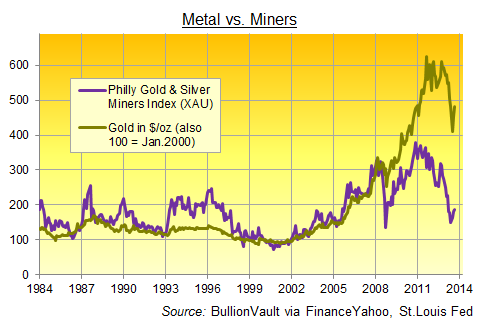Gold & Silver Hedging: The Miners' Dilemma

"We took a bet on the price of gold. We thought that it would go down and we took a position."
- Is the price trending higher or lower?
- How is the current industrial and investment market demand?
- How much downside price risk can the company afford from current levels?
- What stance do we need to take to acquire necessary financing?
- Commodities futures and options market (Comex, NYSE Liffe US);
- Forward trades and options with a bank or trading company;
- Other derivatives, including finance deals with lenders.









 Email us
Email us